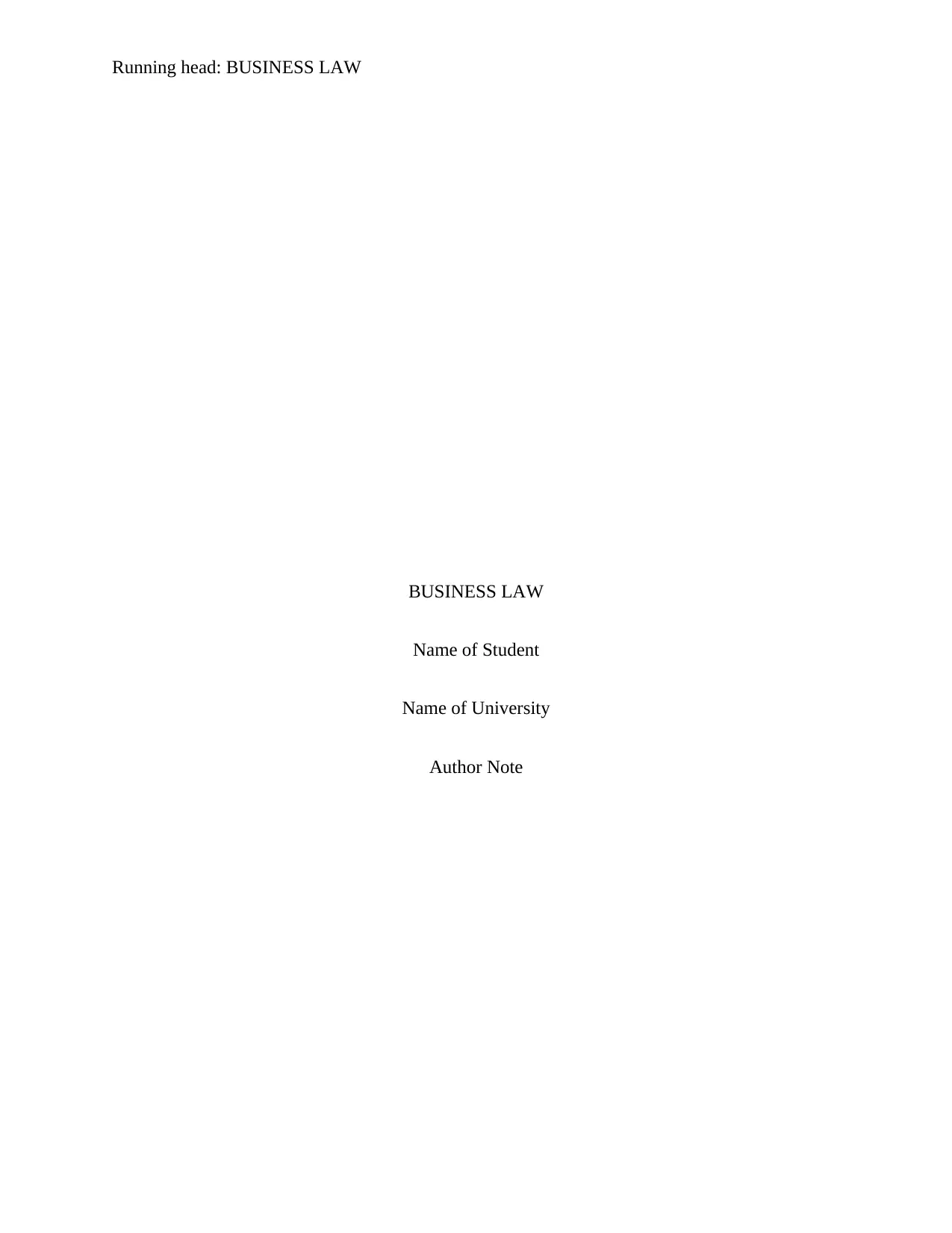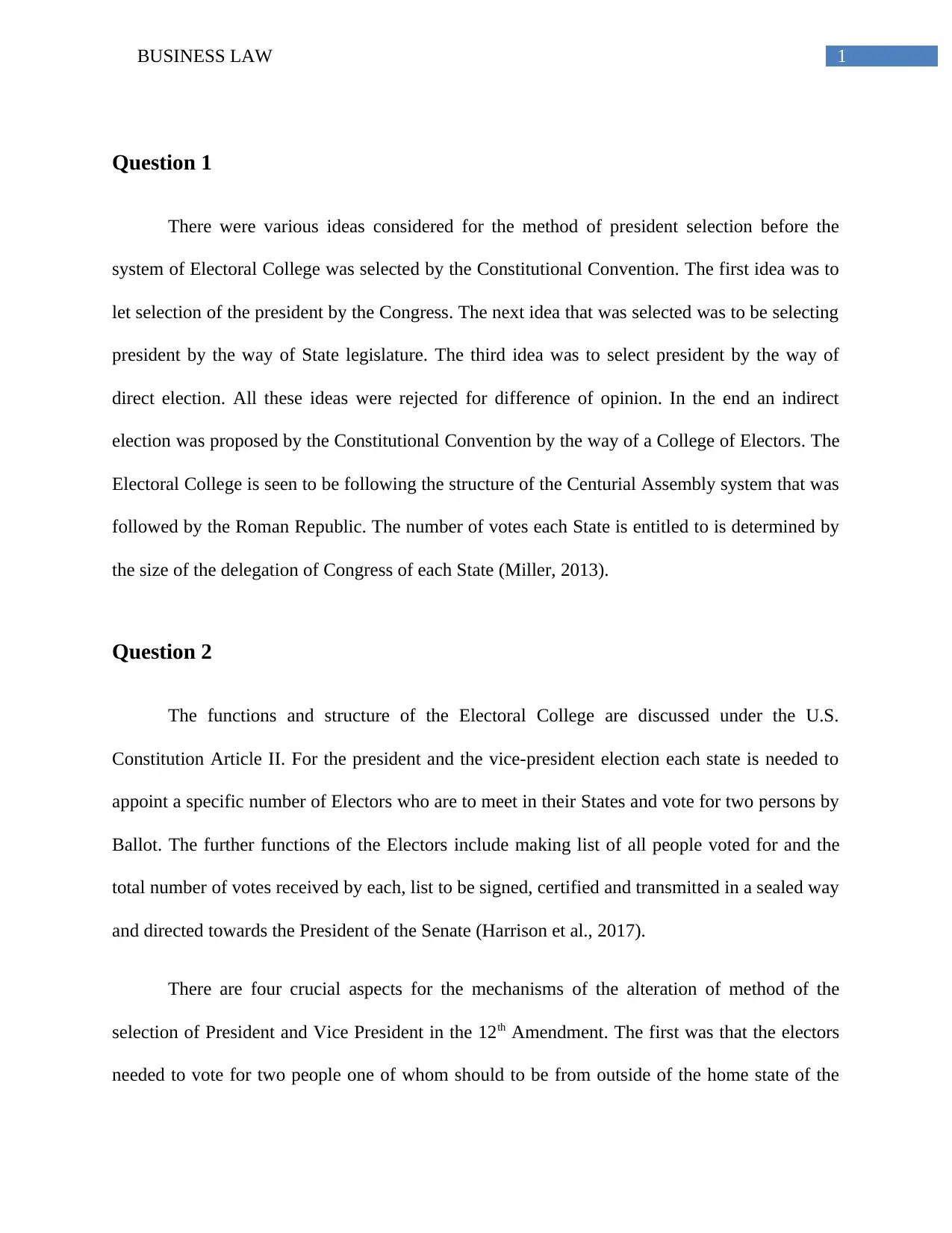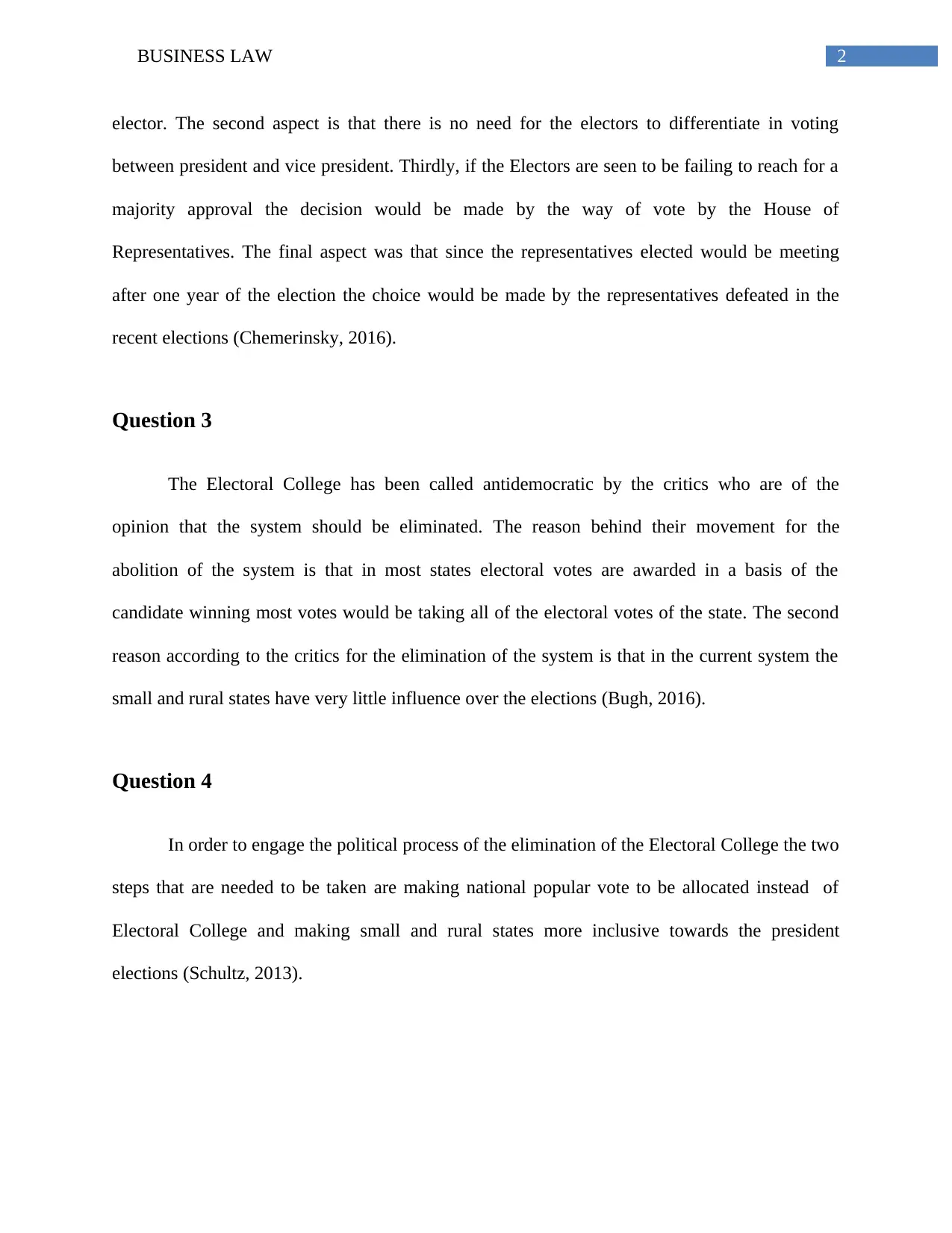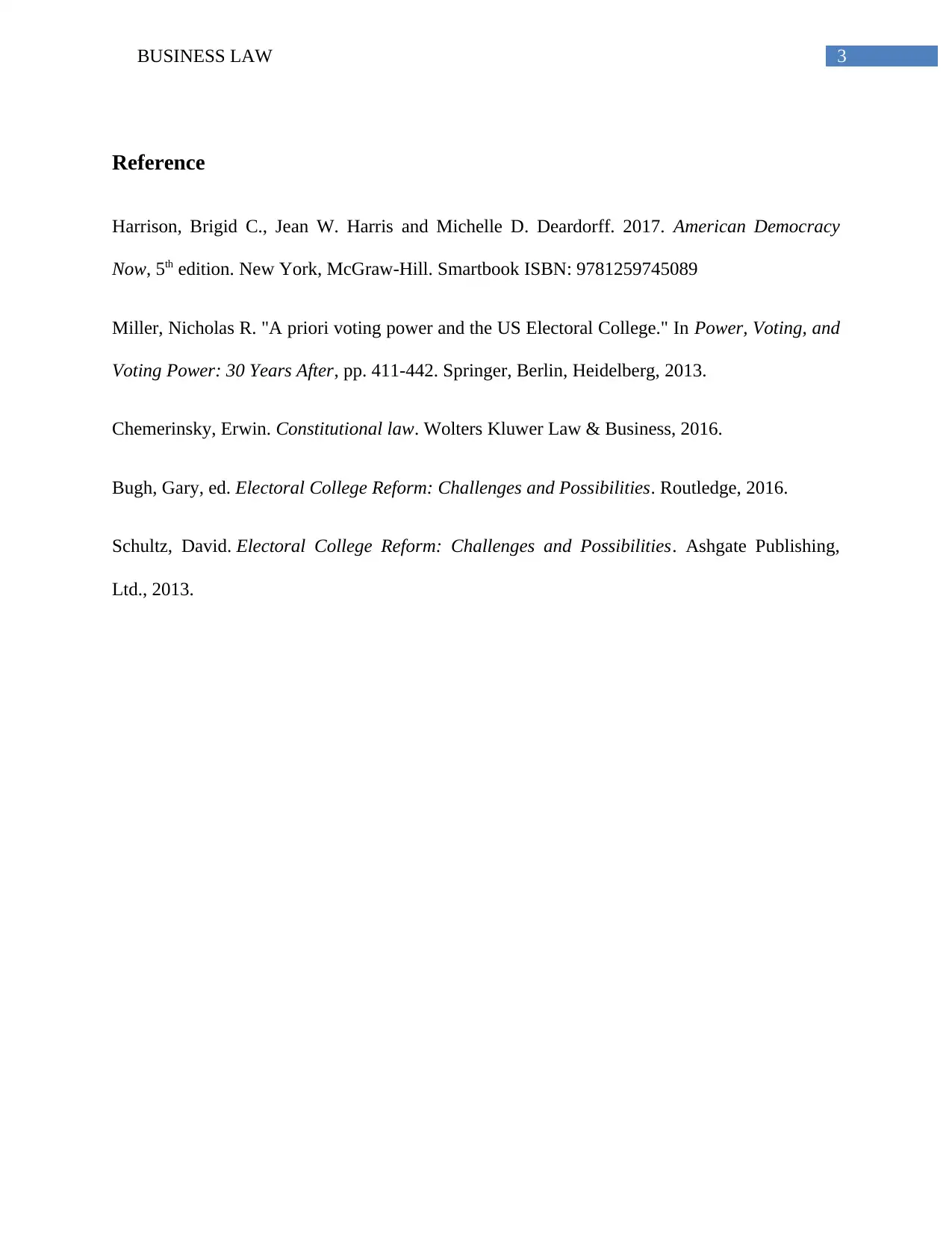Business Law: Electoral College - Functions, Criticism, and Reform
VerifiedAdded on 2022/12/02
|4
|703
|365
Homework Assignment
AI Summary
This business law assignment delves into the intricacies of the Electoral College. It begins by outlining the historical context of its selection, comparing various proposals considered by the Constitutional Convention before the current system was adopted. The assignment then examines the functions and structure of the Electoral College as defined in Article II of the U.S. Constitution, including the roles of electors and the mechanisms for presidential and vice-presidential selection as amended by the 12th Amendment. It also explores the criticisms leveled against the Electoral College, particularly the arguments that it is undemocratic and gives disproportionate influence to smaller states. Finally, the assignment proposes steps for potential reform, focusing on allocating votes based on national popular vote and increasing the inclusivity of small and rural states in the presidential elections. The assignment is well-researched, citing several academic sources to support its arguments.
1 out of 4










![[object Object]](/_next/static/media/star-bottom.7253800d.svg)